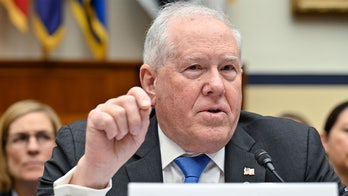Consumers denied ratings on health insurance exchange sites
William La Jeunesse reports from Los Angeles
Shopping for health insurance on the ObamaCare exchanges?
Good luck. Not only will you have to navigate the technical problems that have plagued the site -- but in most states, those running the exchanges are not posting ratings that could give shoppers a clear sense of how good the plans are.
The consumer ratings are called for in the Affordable Care Act. They would be provided by a respected independent company, allowing consumers to judge health plans by treatment outcome, service and consumer satisfaction.
Federal and state officials, though, largely decided it would reflect poorly on the insurance exchanges if some companies were rated and others were not -- and have not yet published them.
"We think that is ludicrous," said Garry Maisel, CEO of Western Health Advantage, an ObamaCare-approved provider. "Consumers deserve to know what is unrated versus what has been around a long time and has a good quality rating."
The controversy arose last week in California, when Western Advantage and two other highly rated providers -- Kaiser Permanente and Sharp Health Care -- complained the state failed to post their ratings because of opposition from lower-rated plans.
"When a quality rating is available, consumers should have access to it," said Maisel. "If I was a consumer, I would want to know [if] the plan I pick, the network of providers I access care through, was just put together or has been around a long time."
Kaiser Permanente in California is ranked #7 nationally. Blue Shield in California is ranked #414. But on the Covered California website, consumers have no way of knowing that, because the state refused to post the ratings.
Last week, officials reversed that decision and said the state will begin adding quality scores in 2015.
"To make a smart choice, we need more information, that is why this rating system is so important," said health care analyst Betsy McCaughey. "Otherwise choosing a plan on these exchanges is just a shot in the dark."
The National Council on Quality Assurance rates almost every health plan available nationwide on treatment, prevention and customer service. Each category is scored on a scale of 1 to 5, and then plans are ranked from best to worst.
Eighty percent of insurers nationwide are rated by the NCQA. But only eight states are posting those ratings. The rest, including the 34 state health care exchanges managed by the federal government, do not.
"It is extremely important consumers have this rating information, otherwise people are just going to pick the lowest price plan when in fact a more expensive one may serve them better," said McCaughey.
Some states -- like Colorado, Minnesota and Oregon -- do post ratings. The Oregon website lists the quality score right next to price, allowing for an apples-to-apples comparison. Maisel said it is a model other states should strive for.
"Value is a combination of price versus quality," he said. "It's like an equation, like a teeter totter. So put it out there! Price is out, so put the quality rating out there and let the consumer decide who they want to buy based on value."
Under the law, the health care exchanges have until 2016 to display quality-of-care data.





